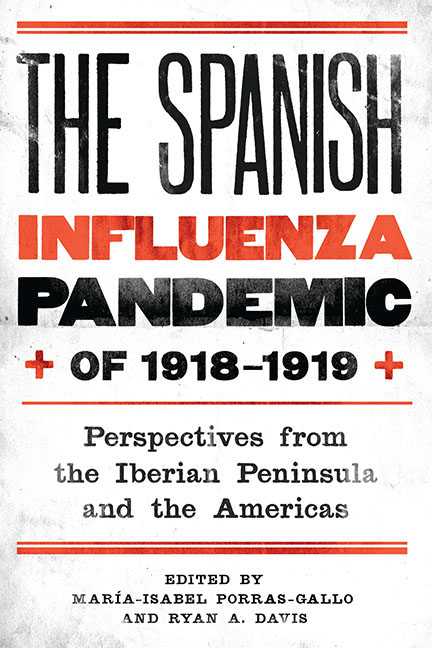 The Spanish Influenza Pandemic of 1918–1919
The Spanish Influenza Pandemic of 1918–1919 Book contents
- Frontmatter
- Dedication
- Contents
- Introduction: Emerging Perspectives of the Spanish Influenza Pandemic of 1918–19
- Part One Scientific Discourse: Now and Then
- Part Two Social Responses: Human and Institutional Actors
- Part Three Interpreting the Epidemic: Sociocultural Dynamics and Perspectives
- 9 A Tale of Two Spains: Narrating the Nation during the 1918–19 Influenza Epidemic
- 10 The Spanish Flu in Argentina: An Alarming Hostage
- 11 Epidemic Disease, Local Government, and Social Control: The Example of the City of Alicante, Spain
- 12 The Gendered Dimensions of Epidemic Disease: Influenza in Montreal, Canada, 1918–20
- 13 Remembering and Reconstructing: Fictions of the 1918–19 Influenza Pandemic
- Selected Bibliography
- List of Contributors
- Index
9 - A Tale of Two Spains: Narrating the Nation during the 1918–19 Influenza Epidemic
from Part Three - Interpreting the Epidemic: Sociocultural Dynamics and Perspectives
Published online by Cambridge University Press: 14 March 2018
- Frontmatter
- Dedication
- Contents
- Introduction: Emerging Perspectives of the Spanish Influenza Pandemic of 1918–19
- Part One Scientific Discourse: Now and Then
- Part Two Social Responses: Human and Institutional Actors
- Part Three Interpreting the Epidemic: Sociocultural Dynamics and Perspectives
- 9 A Tale of Two Spains: Narrating the Nation during the 1918–19 Influenza Epidemic
- 10 The Spanish Flu in Argentina: An Alarming Hostage
- 11 Epidemic Disease, Local Government, and Social Control: The Example of the City of Alicante, Spain
- 12 The Gendered Dimensions of Epidemic Disease: Influenza in Montreal, Canada, 1918–20
- 13 Remembering and Reconstructing: Fictions of the 1918–19 Influenza Pandemic
- Selected Bibliography
- List of Contributors
- Index
Summary
Here lies half of Spain, it died of the other half.
—Mariano José de Larra, “El dia de difuntos de 1836” (The day of the dead 1836)Medicine is a social science, and politics is nothing else but medicine on a large scale.
—Rudolf Virchow, Die Medizinische Reform (Medical reform)Although Spain remains nominally connected to the 1918–19 Spanish influenza epidemic, scholars often seek to minimize the connection between the country and the disease, preferring instead to emphasize its international scope. Thus Beatriz Echeverri, one of the few who has written on Spain's experience of the epidemic to a broader scholarly audience, states categorically, “Spanish flu had nothing ‘Spanish’ about it.” Considering that the Spanish flu neither originated in Spain, nor was it confined only to the country, she is right. Yet, in the rush to reduce Spain's relation to the disease to a function of the name the country and the disease share in common, something of Spain's unique contribution to the social history of the epidemic has been lost. If, from an epidemiological standpoint, the Spanish flu had nothing to do with Spain, the same cannot be said of it from a discursive standpoint.
It is now widely accepted that the Spanish flu gets its name from the news coverage the epidemic received in Spain. In contrast to its counterparts in countries embroiled in World War I, the Spanish press, as a result of the nation's neutrality, reported on the epidemic early and extensively. This source of documentary material thus constitutes one of the richest archives for accessing period responses to the epidemic. Nevertheless, though most scholars of the Spanish flu can probably point to this news coverage as the source of the epidemic's name, very few have studied it. Moreover, those who have tend to use it as a means of recreating the epidemic events as they occurred—retracing what narratologists would call the story of the epidemic. In this, they resemble examples of what Howard Phillips calls the “first wave” of Spanish flu scholarship, namely, studies that have “paid particular attention to exploring the spread and deadly impact of the disease and getting it recognized as a topic worthy of serious study by historians.”
- Type
- Chapter
- Information
- The Spanish Influenza Pandemic of 1918–1919Perspectives from the Iberian Peninsula and the Americas, pp. 173 - 193Publisher: Boydell & BrewerPrint publication year: 2014
